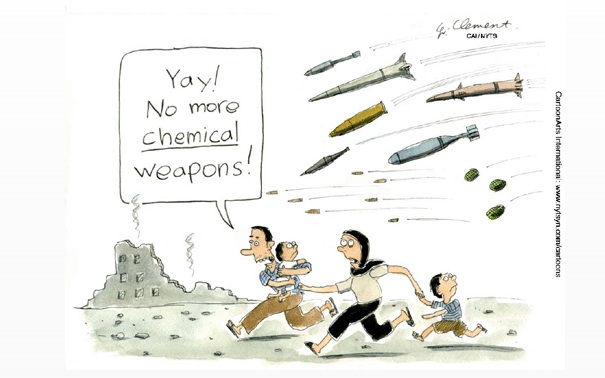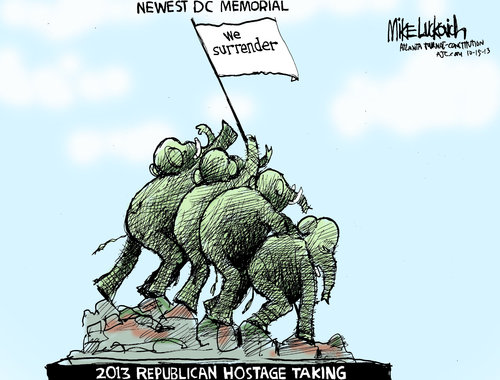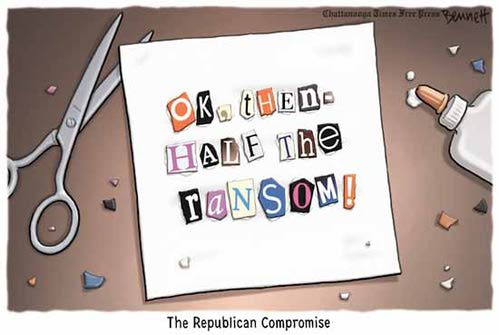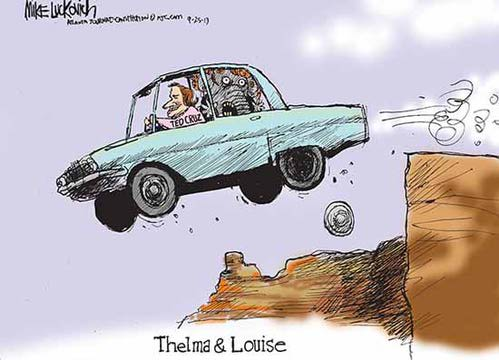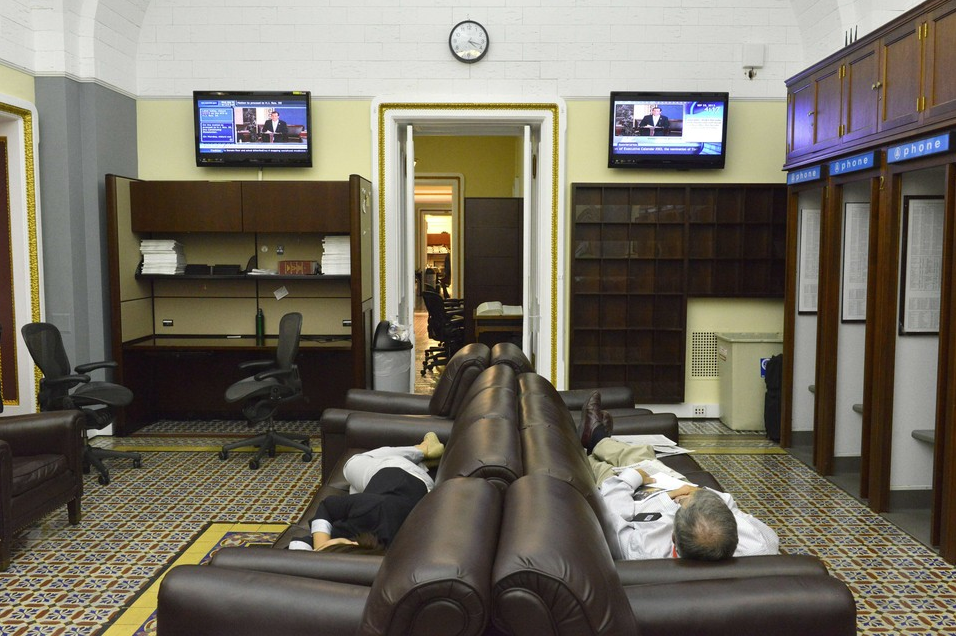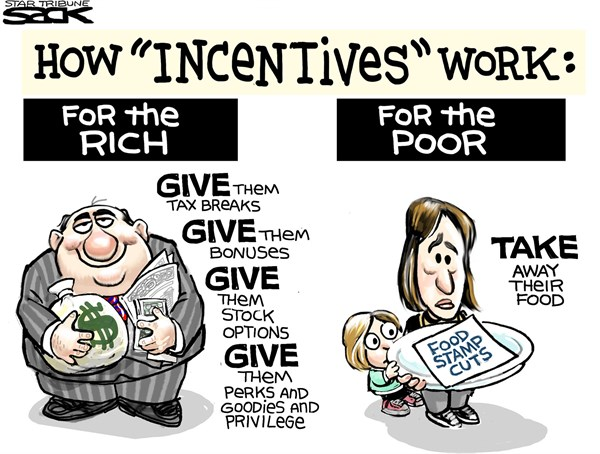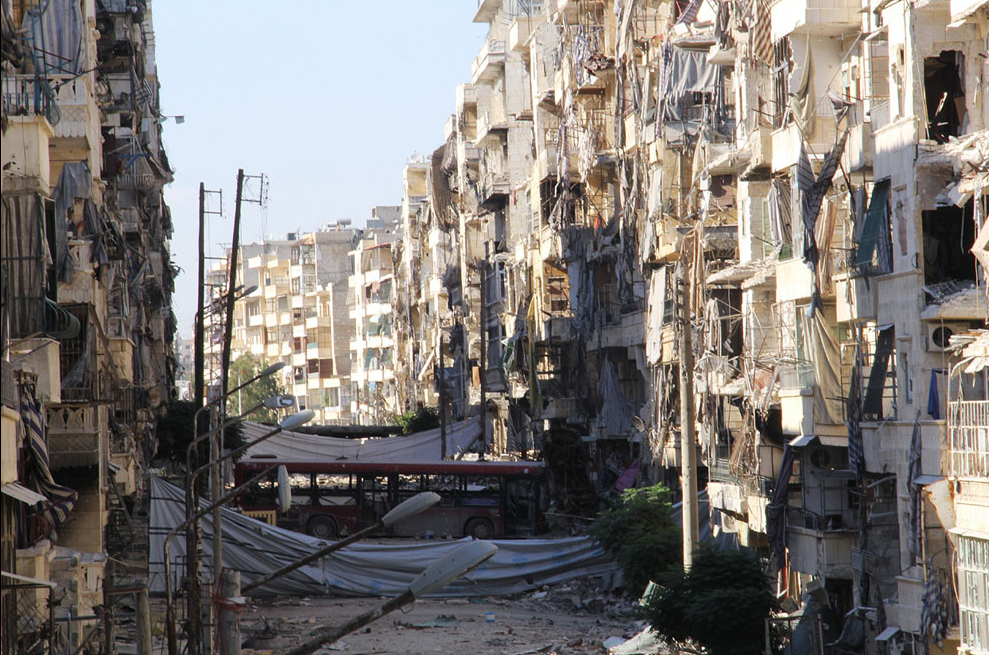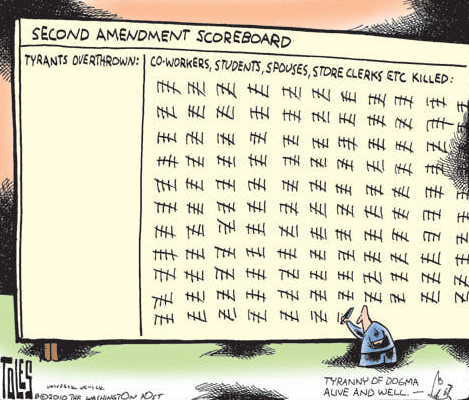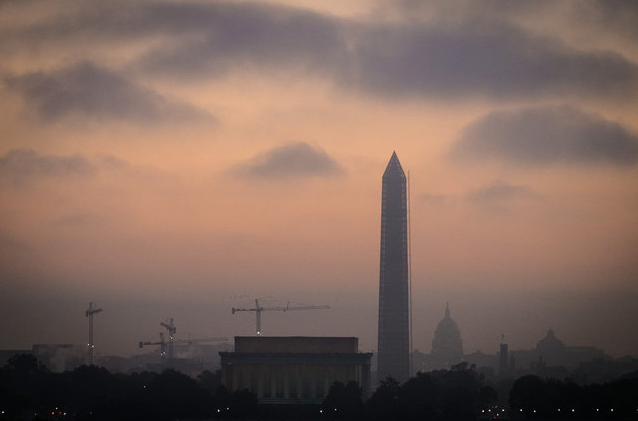
It has been a quiet week in the District of Columbia’s version of Lake Wobegon. Well, not exactly quiet, as there has been all sorts of hot air and subterfuge from those who run the U.S. Congress, leaving the entire city cast in a smoky fog, but it is hard to see that anything has really been accomplished. Then again, that’s not exactly right either, since one of the premiere credit rating agencies (Fitch) has now put the U.S. government on a “credit watch” given that the Congress seems so willing to put the full faith and credit of the U.S. government at risk; so I guess that’s something since its never happened before in the nation’s long history. And yet one would think that we could really expect more from our representatives and senators.
Cynicism aside (and that really is a difficult thing to do under the present circumstances), the photograph above, which has appeared prominently in a number of recent slide shows with direct reference to the current government shutdown, is an important reminder of how difficult it is to picture the partisan divide that has tied the nation’s capital in notes. Put differently, we too often assume that photojournalism is ground in a realist sensibility that literally shows us what is taking place within boundaries of the frame—that and nothing more. But for the most part it is well nigh near impossible to show the principles that are truly at stake in such a standoff in any literal sense—and this goes whether you are a Tea Party conservative who believes that the government is too big for its britches and needs to be brought down a few notches or a left of center President who believes that a democratic government cannot reasonably sustain itself when a minority faction of the minority party seeks to subvert the rule of law by forcing its will on the majority. This is no doubt why the vast majority of photographs that we have seen of the government stand off over the past few weeks have been altogether uninformative and banal: pictures of congressional leaders coming too or fro, or delivering speeches, or leading constituent tours in the Capital; and the same can be said for the President, who is either speaking from the Rose Garden or on the stump somewhere, or as in one photo shoot, helping to make sandwiches for those who have been furloughed by the government shutdown. And more than just being uninformative and uninteresting, they lack any real sense of affect.
The photograph above is different in this regard. Its sensibility is not so much a function of its realist representation of a sunrise on the Washington Mall as it is the way in which it depicts an attitude towards the current situation by placing otherwise common and recognizable elements into figurative relationships via the creative articulation of visual metaphors. It is shot at dawn, just as the sun is rising, but the image nevertheless challenges the confidence one might have that this will be a truly sunny day. The clouds in the sky could turn out to be storm clouds, its not entirely clear, and the fog and mist lend a washed out quality to the image that accents the ways in which the Mall itself is backlit, casting it in shadows that are hard to discern—there could be evil foreboding here, but its really hard to tell. The Washington Monument is under reconstruction, as marked by the scaffolding that surrounds it, a sign perhaps of the reality that government itself needs to be renovated from time to time, a point reinforced in some ways by the cranes that dot the skyline. The cranes are at a standstill, just as one might imagine them to be in the early morning hours, but the foggy haze makes it unclear just when clear skies will abide and hence when all will be back at work. This, it would seem, is a picture of the nation’s capital caught in the standstill of partisan divide: foggy, confused, and not clear where it might be headed.
In short, for all of its realism otherwise, the photograph above is something of an allegory that helps us imagine the world as it is–or as it might be. Like Garrison Keillor’s fictional Lake Wobegon, what photographs like this can do at their very best is to help make the familiar strange and the strange familiar, and in the process they can inculcate an attitude—sometimes salutary and sometimes not—that invites our active engagement with the world.
Well, in any case, that’s the news from D.C.’s version of Lake Wobegon, where all the representatives are principled, the senators are reasonable, and the citizens are … you know, above average.
Photo Credit: J. David Ake/AP
0 Comments
